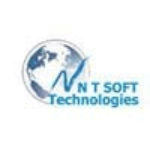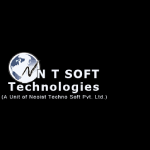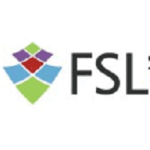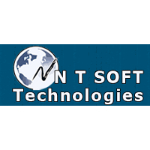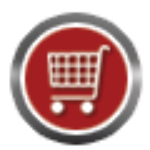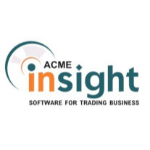List of Best Trading Software
Showing 10 of 34 productsCaptainBiz is a software designed to streamline your business operations and elevate your success. With its user-friendly interface features, CaptainBiz empowers businesses of all sizes to efficiently manage tasks, increase productivity, and achieve...Read CaptainBiz Reviews
AutoFxPro is a software that combines advanced technology with user-friendly features, making it the perfect tool for any trader looking to optimize their investments. With its ease of use and powerful capabilities, AutoFxPro takes trading to a whole...Read AutoFxPro Reviews
Hosiery Care - your ultimate solution for keeping your precious hosiery in top-notch condition. Our innovative software is designed to provide you with hassle-free hosiery maintenance, ensuring longevity and quality wear. Say goodbye to snags, runs,...Read Hosiery Care Reviews
SilkSol-Gold is a solution for businesses looking to streamline their operations and maximize efficiency. With its revolutionary features and user-friendly interface, SilkSol-Gold helps you manage your business processes seamlessly. Say goodbye to ov...Read SilkSol-Gold Reviews
Frontline ERP is a solution designed for manufacturing, exporting, and trading businesses. With its highly integrated modules, such as Procurement, Sales and Order Management, Stock Management, Production Planning and Control, Financial and Cost Acc...Read Frontline ERP Reviews
FMCG Trading, is a solution for businesses in the Fast Moving Consumer Goods industry. With its user-friendly interface features, it revolutionizes the way companies manage and track their FMCG products. Get ahead of the competition with FMCG Trading...Read FMCG Trading Reviews
HDPOS Smart is a solution for all your point-of-sale, billing, and inventory management needs. With its user-friendly interface features, HDPOS Smart simplifies your business processes and helps you grow your business. Say goodbye to traditional meth...Read HDPOS Smart Reviews
MProfit, a powerful software designed to simplify your financial management tasks. With user-friendly features and innovative solutions, MProfit helps you effortlessly track and organize your investments and expenses. Stay on top of your finances wit...Read MProfit Reviews
Acme Insight is a software designed to streamline and simplify business operations. With its powerful features and user-friendly interface, Acme Insight revolutionizes the way businesses manage their processes, saving time, effort, and resources. Sta...Read Acme Insight Reviews
PharmAssist is a software designed specifically for the pharmaceutical industry. With its advanced tools and user-friendly interface, it is a game changer for pharmacists, streamlining their processes and enhancing efficiency. PharmAssist is a soluti...Read PharmAssist Reviews
- What Is Trading Software?
- Top Reasons Why Businesses Need Trading Software?
- What Are the Top Key Features of Trading Software?
- What Are the Top Benefits of Trading Software?
- What Are the Steps to Choose the Right Trading Software?
- What Are the Types of Trading Software for Different Industries?
- What Are the Technology Trends for Best Trading Software?
- What Are the Deployment Options for Trading Software?
What Is Trading Software?
Trading software refers to a category of computer programs designed to assist traders and investors in making informed decisions regarding the purchase and sale of various investment instruments, including stocks, futures, options, and currencies. This entity is occasionally denoted as a trading platform or trading station.
The software facilitates the real-time monitoring of financial markets, the analysis of price action and technical indicators, the execution of trades, and the management of investments across various accounts for traders. The online stock trading software has been specifically developed to analyze and understand data from many sources, including news outlets, financial data feeds, websites, and stock brokers.
Subsequently, top trading software generates trading signals or provides recommendations for buying or selling. The characteristics of online trading software can exhibit notable variations contingent upon the specific financial markets in which it is employed.
These variations encompass a range of functionalities, such as technical analysis tools, charting indicators, trend-following methods, automated trading capabilities, risk management tools, news feeds, and price alerts. Experienced traders, long-term investors, day traders, and scalpers may utilize online trading software for their trading activities.
While online trading software can be a valuable tool, it should be noted that it cannot replace the acquisition of information and experience. Therefore, it is often advisable to undergo some type of training to gain a proper understanding of software usage and to cultivate effective trading techniques.
Top Reasons Why Businesses Need Trading Software?
1. One crucial aspect is the capacity to effectively and safely manage substantial quantities of financial data.
2. The automation of trading has resulted in enhanced precision and diminished instances of human error.
3. One of the advantages of manual processing is the reduction in costs.
4. Enhanced data analysis and decision-making capabilities through the expedient identification of trends.
5. The utilization of automated market risk simulations to improve risk management practices.
6. The expeditious execution of trades in order to leverage market conditions.
7. One of the primary advantages is the availability of real-time market data and analysis, which plays a crucial role in informing important decision-making processes.
8. One of the key advantages of globalization is the increased accessibility to global markets and a wider range of asset classes.
9. Automated monitoring of regulatory reporting and adherence to company policies.
10. The utilization of cloud platforms has resulted in enhanced efficiency and mobility.
11. The client experience is improved with the implementation of automated order placing.
12. Enhanced workflow processes with the implementation of streamlined procedures using intuitive and automated interfaces.
13. The implementation of contemporary encryption algorithms has resulted in improved data security.
14. The utilization of data-driven marketing strategies has resulted in a notable enhancement in client engagement and retention.
15. The implementation of automated post-trade compliance processes has resulted in heightened cost-savings.
What Are the Top Key Features of Trading Software?
The top key features of trading software includes the following:
1. Automated Trading: Automated trading systems enable traders to execute and manage their trades without the need for direct intervention in each individual trade. This functionality allows users to efficiently enter and exit positions with no need for manual intervention.
2. Charting and Technical Analysis: The utilization of charting and technical analysis enables traders to effectively watch and analyze price movements, monitor trends, and identify crucial levels of support and resistance. These characteristics empower users to make more knowledgeable trading judgments.
3. Risk Management: Risk management tools are utilized by traders to effectively control and mitigate their exposure to potential risks. These capabilities encompass margin computations, portfolio monitoring, and position sizing.
4. Trading Tools: Online trading software commonly includes a diverse range of tools, including calculators, scanners, backtesters, and signal indicators. These tools serve the purpose of facilitating traders in their analysis of market data and enhancing their ability to make well-informed trading decisions.
5. Backtesting: The practice of backtesting enables traders to evaluate the performance of a trading system by subjecting it to historical data, thereby assessing how the system would have operated in previous market conditions. This functionality can be utilized to enhance and optimize a trading system with the aim of improving its overall performance.
6. Data and News Feeds: Online stock trading software is equipped with a diverse range of data and news feeds that facilitate traders in remaining informed about the most recent market news and fluctuations.
7. Execution: Trading software offers traders the capability to swiftly execute deals and obtain optimal pricing. The platform has functionalities such as one-click trading and advanced order types, facilitating the execution of more complex trading orders.
What Are the Top Benefits of Trading Software?
The top benefits of trading software include:
1. Improved Efficiency: Trading analysis software facilitates the expeditious execution of transactions by automating many tasks, including data analysis and order placement. This has the potential to substantially decrease the extent of physical work required.
2. Increased Accuracy: Numerous trading software applications are equipped with integrated algorithms that are specifically engineered to optimize precision and mitigate errors. This approach has the potential to mitigate trading losses and optimize investment profitability.
3. Lower Transaction Costs: Top trading software frequently presents reduced transaction costs in comparison to manual trading. This phenomenon can lead to increased financial gains and a greater cumulative sum.
4. Enhanced Portfolio Management: The utilization of trading software facilitates the enhanced portfolio management through the provision of instantaneous access to up-to-date data. This can enable individuals to make investing decisions that are more informed.
5. Improved Risk Management: The implementation of parameters and controls can enhance one's ability to properly manage risk. Implementing this strategy can effectively mitigate the risk of significant financial losses and ensure the general security of one's investment portfolio.
6. Advanced Analysis: Stock market trading software offers a range of sophisticated technical analysis capabilities, including backtesting, which enables users to effectively evaluate performance data and identify emerging market patterns.
7. Automation: Automated online trading software offers the potential to enhance efficiency by assuming responsibility for routine tasks, including trade execution, portfolio management, and research activities, so saving valuable time.
This can potentially give additional time for individuals to concentrate on tasks of greater significance.
What Are the Steps to Choose the Right Trading Software?
1. Identify your trading goals and objectives: It is imperative to dedicate sufficient time and cognitive effort into contemplation of one's desired outcomes in the realm of trading. Please articulate your objectives, encompassing any distinct attributes or platforms you desire the product to possess.
2. Research trading software: Conduct a comprehensive investigation of various online trading software options in order to choose the most suitable one that aligns with your specific trading objectives. This analysis encompasses various aspects like user-friendly interfaces, dog trading, backtesting capabilities, customer feedback, trading methods, and cost.
3. Set a budget: Determine the requisite financial allocation for stock trading software in accordance with one's trading objectives. When conducting research, it is important to take into account one's budgetary constraints.
4. Consider trading costs: Various software applications may possess different types of commissions, fees, and additional expenses associated with trading activities. It is imperative to do a comprehensive examination of the expenses linked to each alternative under consideration.
5. Test the software: Prior to making a commitment to top trading software, it is advisable to thoroughly evaluate its functionality and compatibility with one's computer system through extensive testing.
6. Review user feedback: Examine customer input pertaining to various stock trading software applications in order to obtain a more comprehensive understanding of their functionalities and user experience. Individuals that are currently use the product possess the most valuable perspective.
7. Purchase the software: After identifying the best trading software that aligns with one's requirements and objectives, it is advisable to acquire the software and commence its utilization.
What Are the Types of Trading Software for Different Industries?
There is a notable degree of variance in the stock trading software utilized by different organizations, which contributes to overall diversity in this domain. Stock market trading software can be broadly classified into three main categories: automation, analytical, and workflow.
1. Automation software facilitates the execution of deals with less reliance on manual intervention. This particular software is commonly employed in trading settings characterized by high volumes, such as stock, futures, and options markets. Automation software enables traders to conduct backtesting and optimization of strategies, automate the execution of orders, and seamlessly interact with external data sources.
2. Analytical software is employed for the purpose of analyzing intricate financial markets, hence offering valuable information pertaining to trade possibilities and risk mitigation. This particular program commonly employs sophisticated data analysis and visualization techniques in order to reveal trade prospects and indicate potential degrees of risk.
3. Workflow management software enables traders to effectively oversee and control their trading processes in a comprehensive manner. This particular software has the capability to automate trade setups as well as post-trade operations, including real-time notifications and the ability to incorporate data from various sources.
Additionally, it offers traders a comprehensive perspective of their complete trading operations.
What Are the Technology Trends for Best Trading Software?
The utilization of artificial intelligence (AI) and machine learning (ML) algorithms is a prominent technological trend in the realm of optimal best stock trading software. These algorithms enable the program to evaluate market and individual stock data for the purpose of identifying patterns and providing suggestions.
These algorithms facilitate traders in making better-informed judgments with enhanced speed and precision. Another emerging phenomenon in the financial industry is the adoption of cloud-based trading tools, facilitating traders' ability to conveniently access their data, charts, and analytics across various devices and geographical locations.
In recent times, a notable transition has occurred in the trading industry, wherein there has been a growing inclination towards automation. This shift is characterized by the development of the best trading software that facilitates the automation of many trading processes, including but not limited to order execution, risk management, and portfolio monitoring.
This enables traders to allocate more attention to strategic decision-making rather than routine operational activities, hence mitigating the likelihood of errors.
What Are the Deployment Options for Trading Software?
The selection of deployment methods for the best trading software is contingent upon the specific type of software employed, encompassing cloud-based solutions, desktop solutions, and web-based solutions as the most common alternatives.
1. Cloud-based solutions offer customers the convenience of accessing and engaging in trading activities from any location worldwide, without the requirement of downloading and installing software. The hosting of the solution is undertaken by the provider, hence entailing the responsibility of maintaining and updating the program as required.
2. Desktop solutions provide the provision of local trade services on a single computer. Typically, customers are required to download the stock market trading software and perform a local installation in order to implement this particular solution.
Although this solution offers customers a higher level of autonomy, it necessitates a greater understanding of stock trading software in order to effectively engage with it.
3. Web-based solutions refer to a category of solutions wherein users are able to access trading services through the internet. The increasing popularity of this solution can be attributed to its accessibility, since it can be accessed from any computer equipped with a web browser that is compatible with the system.
In comparison to desktop solutions, web-based solutions are typically characterized by their user-friendly interface, rendering them more accessible. However, it is worth noting that web-based solutions may exhibit a reduced range of functionalities in comparison.


